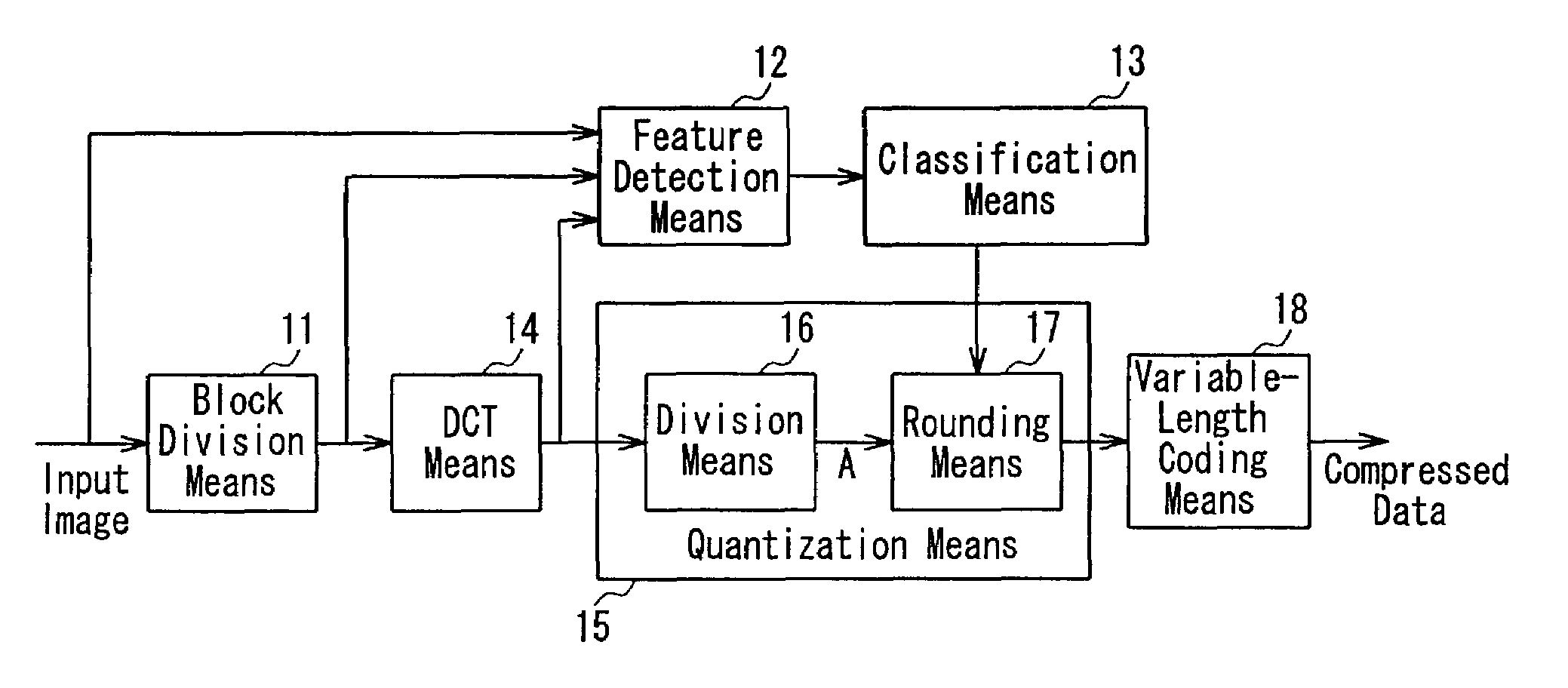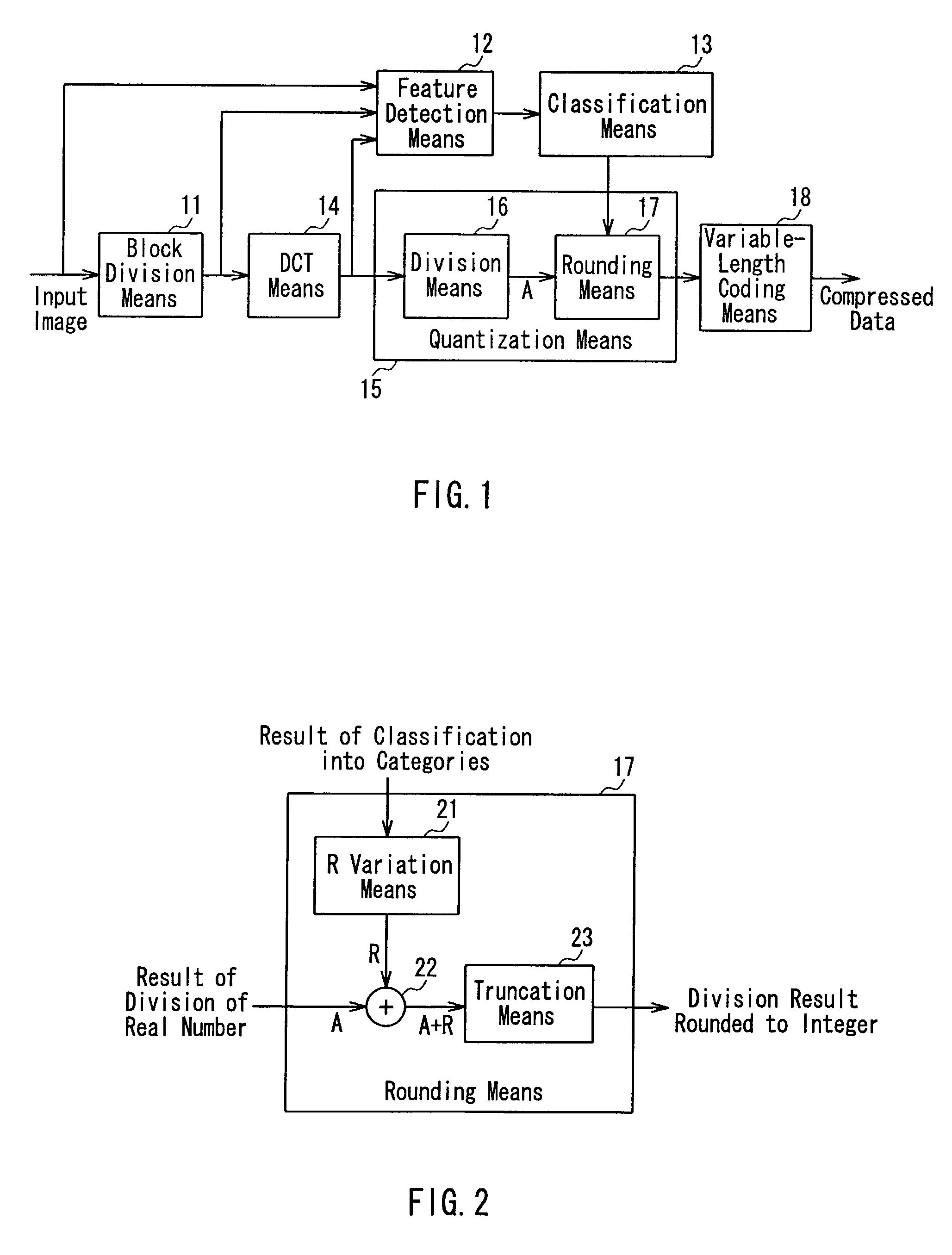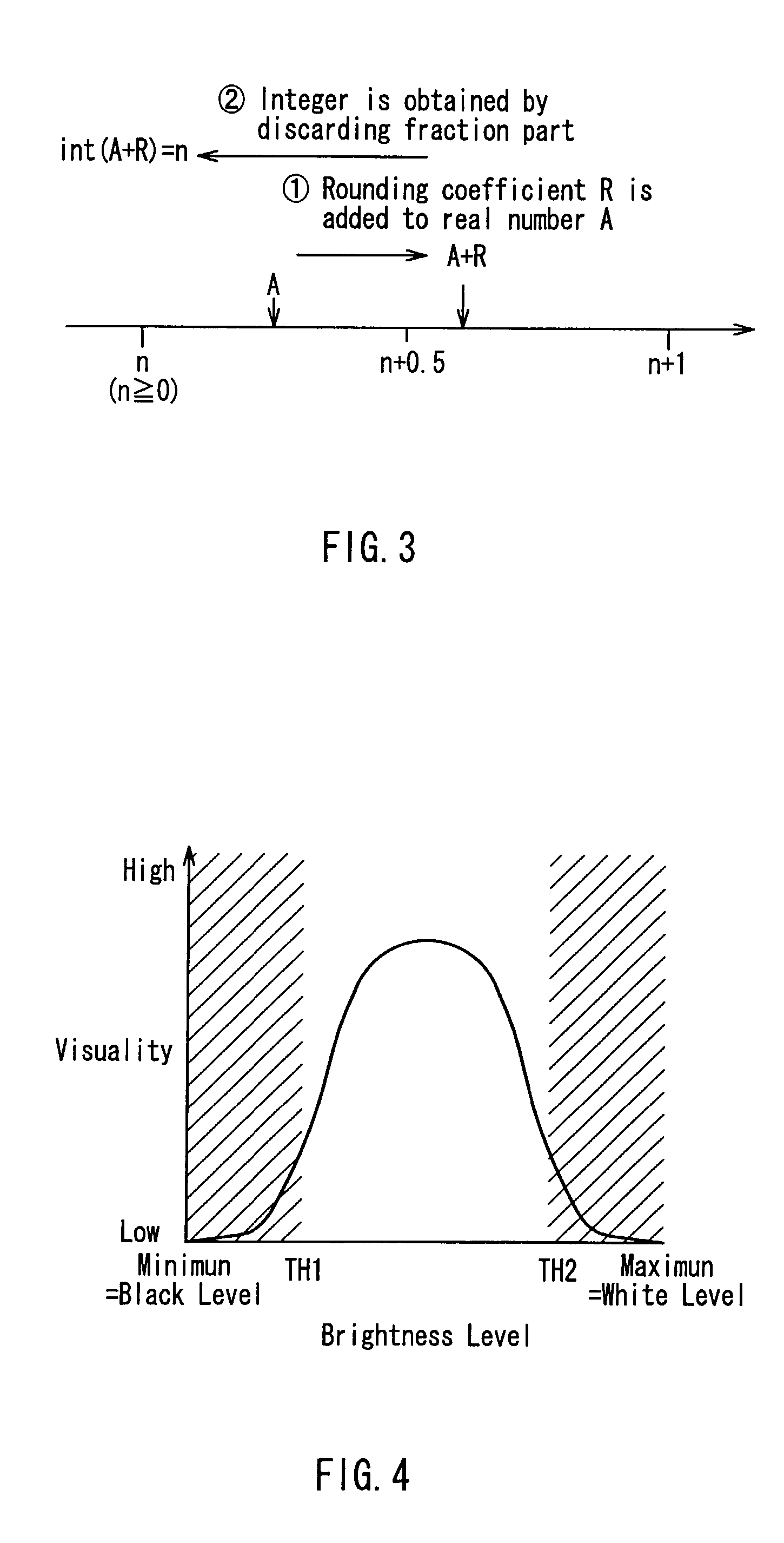Image coding device and method
a coding device and image technology, applied in the field of image coding methods and devices, can solve the problems of inability to carry out delicate optimal control with respect to each block, data cannot be decoded correctly, etc., and achieve the effect of suppressing the increase in the amount of generated codes and high precision
- Summary
- Abstract
- Description
- Claims
- Application Information
AI Technical Summary
Benefits of technology
Problems solved by technology
Method used
Image
Examples
first embodiment
[0019]FIG. 1 is a block diagram illustrating a configuration of an image coding device according to the present embodiment, which is described referring to a case in which the present invention is applied in a DCT (discrete cosine transform) coding method such as the MPEG or the JPEG.
[0020]In FIG. 1, 11 denotes a block division means that divides an image into blocks. 12 denotes a feature detection means that detects features of an image of each block by employing an input image, an image of the block, a DCT coefficient, and the like. 13 denotes a classification means that classifies the block into one of several categories according to the significance of the block based on a result of the detection by the feature detection means 12. 14 denotes a DCT means that applies DCT to data supplied from the block division means 11. 15 denotes a quantization means that divides a DCT coefficient by a predetermined value and makes the DCT coefficient to be represented in an integer form. 16 de...
second embodiment
[0029]The following will describe, as the present embodiment, a method for detecting feature of blocks by taking advantage of a human visual characteristic with respect to a brightness level. Since an image coding device of the present embodiment has the same configuration as that in the first embodiment, the following description of the present embodiment will focus on the operations of the feature detection means 12 that detects features of blocks and the classification means 13.
[0030]FIG. 4 illustrates a human visual characteristic with respect to brightness levels. The human vision has a characteristic as shown in FIG. 4, and hence, it is unable particularly to distinguish black portions with brightness levels lower than a certain threshold value TH1 (indicated by hatching in FIG. 4) from one another, and to distinguish white portions with brightness levels higher than a certain threshold value TH2 (TH12) (indicated by hatching in FIG. 4) from one another, even if there are leve...
third embodiment
[0031]The following will describe, as the present embodiment, a method for detecting features of a block by taking advantage of a human visual characteristic with respect to color difference levels. Since an image coding device according to the present embodiment has a configuration identical to that according to the first embodiment, the following description of the present embodiment will focus on the operations of the feature detection means 12 for detecting features of a block and the classification means 13.
[0032]FIG. 5 illustrates a human visual characteristic with respect to color difference levels. The human vision has a characteristic as shown in FIG. 5, and hence, it particularly is able to notice distortion more easily in a portion with a color difference level higher than a threshold value TH3 and with a high color saturation degree (indicated by hatching in FIG. 5). Therefore, in the case where an average of color difference levels of a block is in the foregoing range, ...
PUM
 Login to View More
Login to View More Abstract
Description
Claims
Application Information
 Login to View More
Login to View More - R&D
- Intellectual Property
- Life Sciences
- Materials
- Tech Scout
- Unparalleled Data Quality
- Higher Quality Content
- 60% Fewer Hallucinations
Browse by: Latest US Patents, China's latest patents, Technical Efficacy Thesaurus, Application Domain, Technology Topic, Popular Technical Reports.
© 2025 PatSnap. All rights reserved.Legal|Privacy policy|Modern Slavery Act Transparency Statement|Sitemap|About US| Contact US: help@patsnap.com



